Choosing Non-Toxic Home Décor for a Healthy Space
Creating a healthy living space goes beyond aesthetics – it involves mindful choices in every aspect of your home, including decor. In this post, we’ll explore the importance of choosing non-toxic home decor for a space that promotes well-being and supports a healthier lifestyle.
It can be so much fun to decorate your home and create an atmosphere that suits your style, but it’s crucial to consider non-toxic home décor when making decisions. Today’s post will cover trusted brands, chemicals to avoid, and what to focus on when decorating your home!
What do I need to know about choosing non-toxic home décor?
The decor you choose directly impacts the air you breathe and your family’s health. Choosing non-toxic home decor materials is a proactive step toward reducing exposure to harmful chemicals and fostering a healthy indoor environment.
While I am no expert in this area, our family works hard to choose safer alternatives as often as we can. Once you’ve learned the potential harm of exposing yourself and your family to these harsh chemicals, it’s hard not to think about. It’s hard not to want to do better.
Shifting to non-toxic alternatives has been an ongoing process for us. It was not an overnight change. We stick to our budget, research changes that we want to make, and keep moving forward. I want to encourage you to stay focused on your goal and let go of the pressure to make changes too quickly.
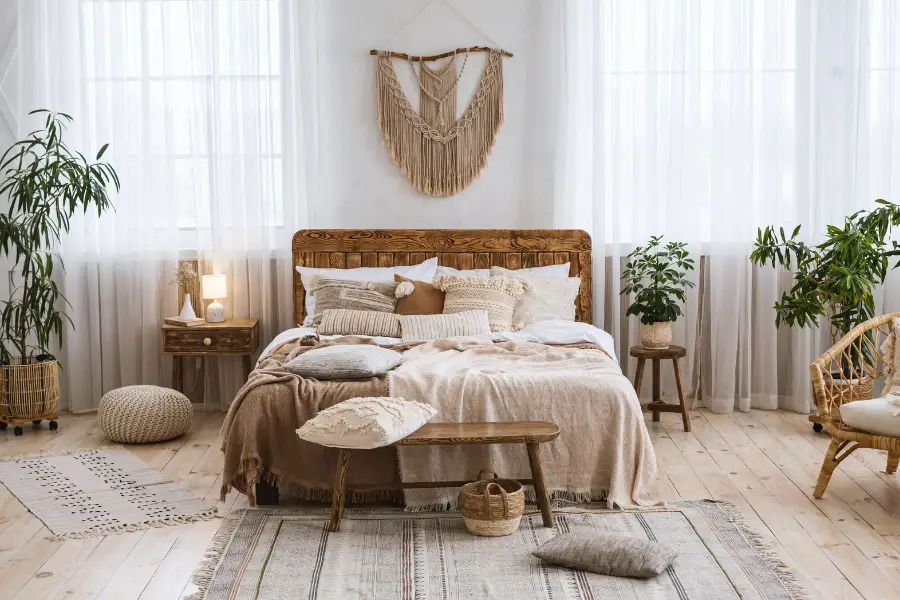
Understanding toxicity in home decor
Conventional home decor items often contain harmful toxins that can impact indoor air quality. Off-gassing, a process where chemicals are released into the air, is common in many decor materials, contributing to the presence of volatile organic compounds (VOCs). These substances can lead to respiratory issues, headaches, and other health concerns over time. Many décor materials include flame retardants that reduce the risk of burning furniture and other décor items in the event of a fire. While that may seem appealing, these chemicals seep into our skin and lungs and cause health issues.
When researching home décor, watch for items used in production. If websites or associates in a physical store location cannot answer your questions properly, contacting manufacturers to ask for complete disclosures is easy. If a company is giving you a difficult time about releasing information, this is a good sign that they won’t be honest about the chemicals in their décor.
Non-toxic materials for furniture
When selecting furniture, prioritize non-toxic materials such as solid wood, bamboo, or reclaimed materials. These options are free from synthetic finishes and harmful chemicals commonly found in conventional furniture. Not only are they better for your health, but they also contribute to a more sustainable lifestyle. You’ll reduce exposure to harsh products and eliminate the need to off-gas new furniture.
Here are a few safer options to consider:
Non-toxic 0ptions for flooring
Hardwood, cork, and natural linoleum are excellent options that don’t release harmful chemicals into the air. Unlike traditional carpeting, which can harbor allergens and toxins, these alternatives contribute to a cleaner and healthier indoor environment.
Low-VOC and non-toxic paints
Make sure to choose low-VOC or non-toxic paints to avoid the release of harmful chemicals. These paints provide vibrant colors without compromising indoor air quality, making them ideal for a healthier home.
Non-toxic fabrics and textiles
Look for materials like organic cotton, hemp, or linen, which are free from the harmful chemicals commonly found in conventional fabrics. Your decor choices can now be stylish and supportive of your family’s well-being.
Green and eco-friendly decor accessories
Consider recycled glass decor, natural fiber rugs, and non-toxic wall art. These elements add character to your space and align with a commitment to environmental responsibility.
Indoor plants for air purification
Introduce indoor plants to your decor for aesthetic appeal and air purification. Plants such as spider, snake, and peace lilies help filter out toxins, contributing to a fresher and healthier indoor atmosphere. Choose non-toxic planters and pots to complement your decor. Note for pet owners: Always check with your vet or trusted source to ensure the plants you bring into your home are safe for your pawed pals.
DIY Non-Toxic Decor Projects: Create non-toxic decor through simple projects, such as handmade art using recycled materials or repurposed furniture. DIY projects personalize your space and allow you to control the materials used.
Considerations for Children’s Rooms: Extend your commitment to non-toxic living to your children’s rooms. Choose kid-friendly and eco-friendly decor options, such as organic bedding, non-toxic paints, and sustainable furniture. Creating a healthy space for your children fosters their well-being from an early age.
Shopping Guide for Non-Toxic Decor: When choosing non-toxic home decor items, look for brands and certifications that prioritize non-toxic materials. Seek labels indicating organic or non-toxic certifications to ensure your choices align with your commitment to a healthier home. Surprisingly, Ikea has dozens of safer home decor options, but do your research before trusting everything in the store.
Final Thoughts
Choosing non-toxic home decor is a conscious decision that contributes to a healthier living space for you and your family. By prioritizing non-toxic materials in furniture, flooring, fabrics, and accessories, you’re creating an environment that supports well-being and aligns with a sustainable lifestyle. You can transform your space into a haven of health and harmony with every decor choice.
This site may contain links to affiliate websites including Amazon. I may receive an affiliate commission for any purchases made by you through Amazon or other potential affiliates and no additional cost to you. Thank you for your support.

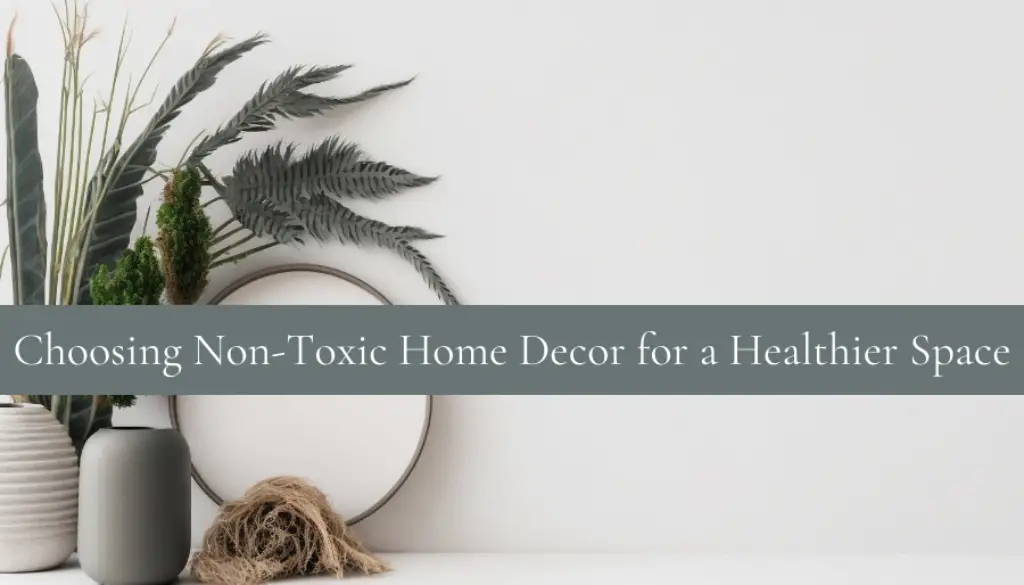
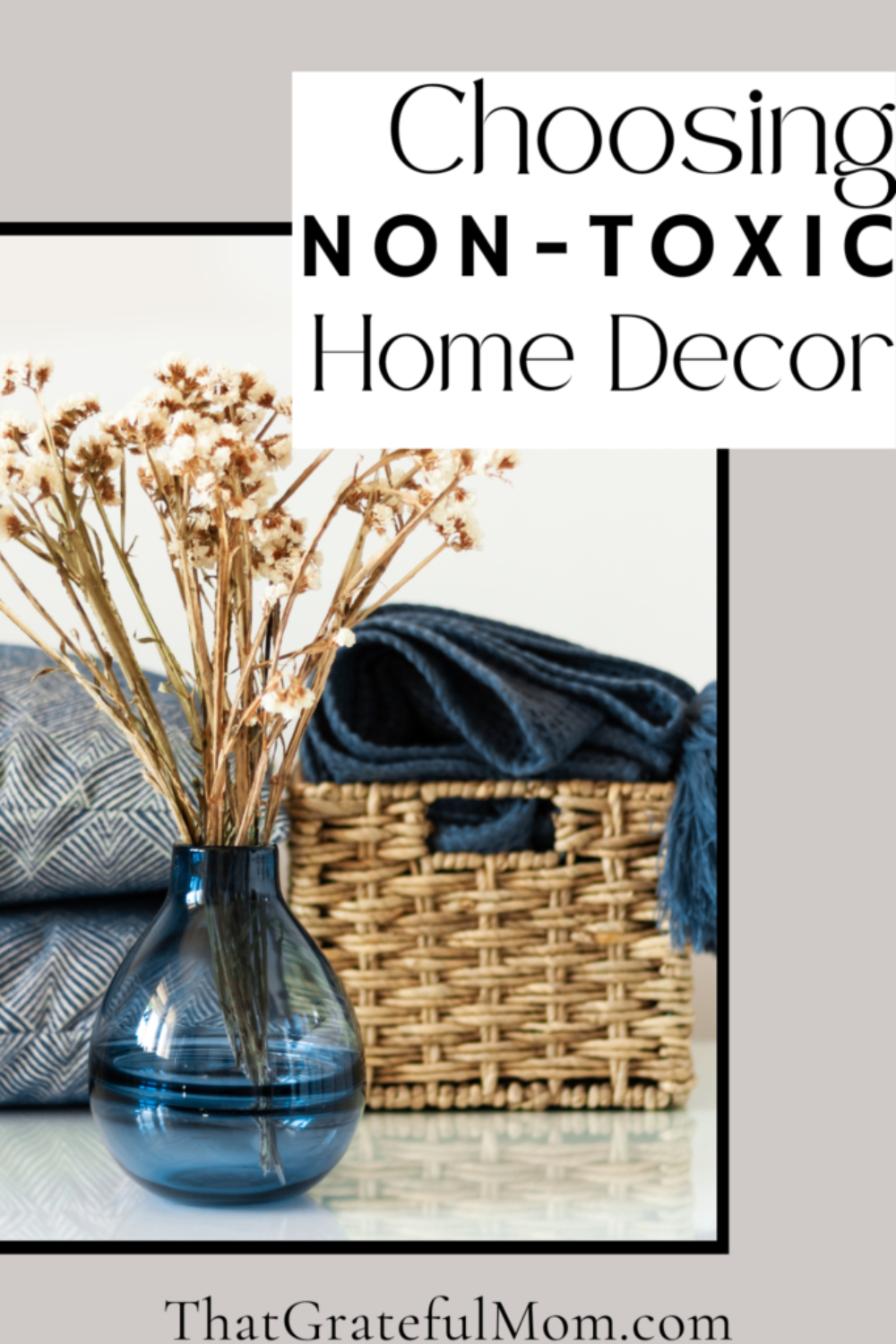
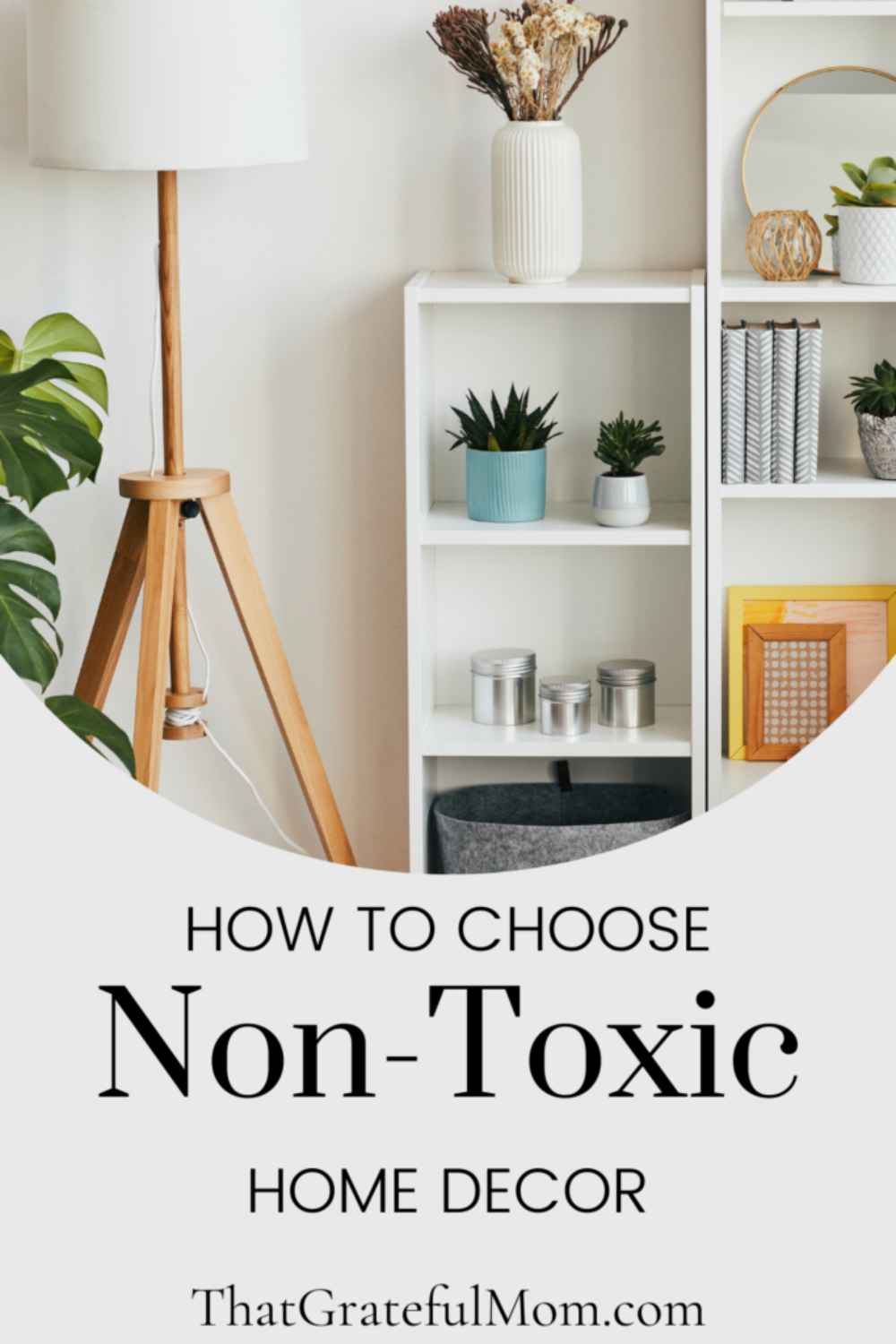
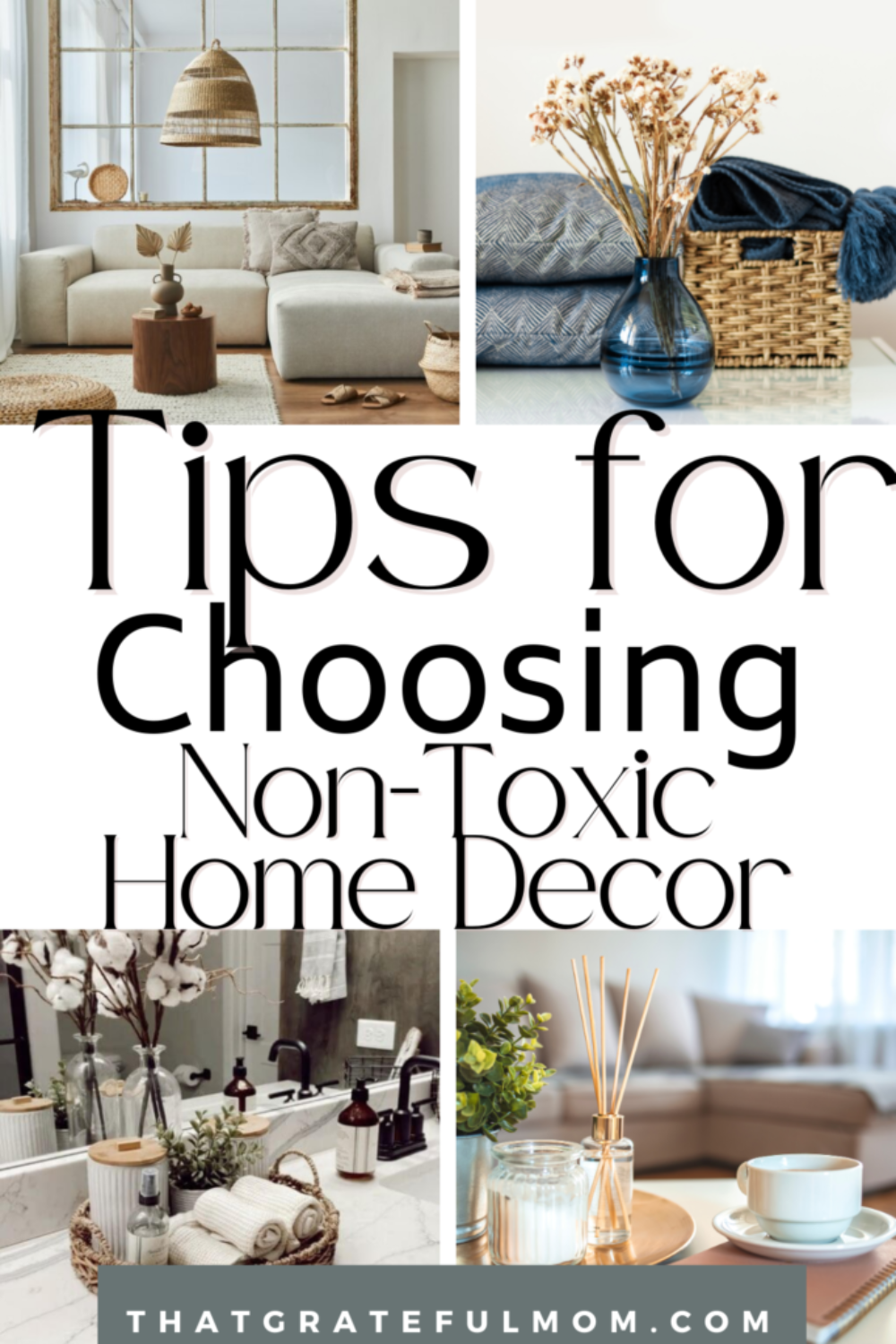
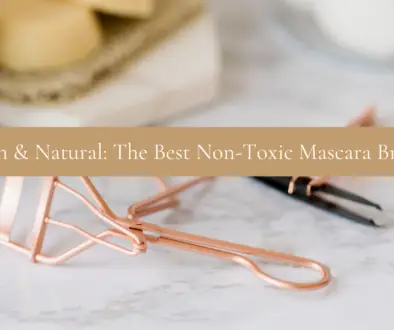
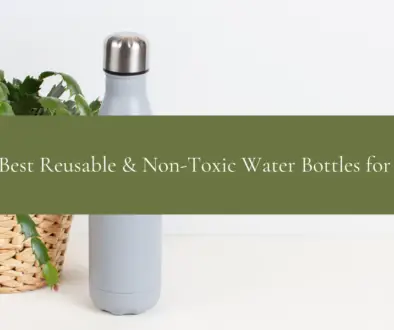

February 14, 2024 @ 12:13 am
Thanks for shedding light on the importance of non-toxic home decor! Prioritizing my family’s health by making sustainable choices has been one of my biggest tasks as of late. Thank you for sharing!